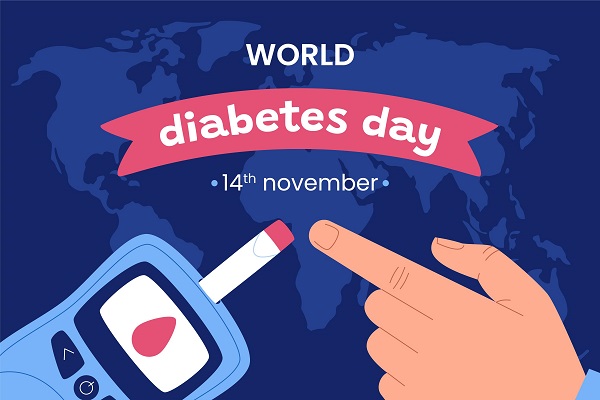Contributed by: Abshar Faheem
Ovarian cancer, the second-most type of gynecological cancer, is a condition in which abnormal cells of ovaries grow and multiply uncontrollably forming a tumor. The ovaries are two female reproductive glands on either side of the uterus that produce eggs or ova. The eggs move out from the ovaries through the fallopian tubes and go into the uterus where the fertilized egg settles in and develops into a fetus. The ovaries are also the main source of hormones such as estrogen and progesterone. The ovary is made up of 3 kinds of cells ( epithelial cells, Germ cells, and stromal cells) and each type of cell can develop into a different type of tumor.
- Epithelial tumors: This tumor can be developed in the layer of the tissue on the surface of the ovaries. Almost 90 percent of ovarian cancers happen due to epithelial tumors.
- Germ cell tumors: This tumor can occur in the cells that produce eggs. Germ cell tumors can be rare.
- Stromal tumors: This tumor can begin in the structural tissue cells that keep the ovary together and produce hormones estrogen and progesterone.
If the tumor is left untreated, it can spread to other parts of the body forming metastatic ovarian cancer. The tumors can either be benign ( non-cancerous) or malignant ( cancerous). Benign tumors are non-cancerous cells and do not spread to other parts of the body, on the other hand, malignant tumors are cancerous and can spread to other parts of the body.
Symptoms of ovarian cancer
Most ovarian cancers are developed in the epithelium or outer lining of the ovary. Ovarian cancer oftentimes remains undetected until it has expanded within the pelvis and stomach. In the initial stages, there can be few or no symptoms at all. If the symptoms of ovarian cancer develop it can be overlooked easily because the initial symptoms can be vague and similar to other ailments such as premenstrual syndrome, irritable bowel syndrome, or a temporary bladder problem. However, the symptoms of ovarian cancer may persist and become worse over time. Following are some early symptoms of ovarian cancer:
- Pain or pressure in the pelvis
- Unexpected vaginal bleeding
- Pain in the back or abdomen
- Abdominal bloating
- Feeling full rapidly when eating
- Difficulty in eating
- Frequent urination
- Constipation
- Weight loss
- Appetite loss
- Breathlessness
- Fatigue
- Nausea
- Indigestion
- Heartburn
- Painful intercourse
- Dermatomyositis
- Menstrual irregularities
- Back pain
These symptoms can develop because of several reasons. They are not always necessarily due to ovarian cancer. Such symptoms are common and temporary that can be easily treated. These symptoms will persist if they are particularly due to ovarian cancer. Symptoms of ovarian cancer can become more critical if the tumor grows and expands. At this late stage, ovarian cancer may be more complicated to treat effectively and can be deadly.
Note: Treatment of cancer can be best and effective if it is detected in the early stages. If you feel new and unusual symptoms, please consult with your doctor immediately.
Causes of Ovarian Cancer
The exact cause of ovarian cancer is unknown. Experts are still trying to find the reason behind ovarian cancer and believe that certain risk factors can contribute to it. These risk factors may include:
- Family history
- Older age
- Reproductive history
- Uterine, colon, or breast cancer
- Hormone therapy
- The use of certain fertility drugs
- Obesity and overweight
- Endometriosis
- No history of pregnancy
It is likely to get ovarian cancer without holding any of these risk factors. Likewise, holding any of these risk factors doesn’t surely indicate that you will develop ovarian cancer.
Other factors may contribute to ovarian cancer including,
- Dietary factors
- Use of talcum powder
- High levels of androgens or male hormones
Experts have not yet proved the link between the factors and ovarian cancer but they believe these factors may increase the risk of ovarian cancer.
Treatment/Management of Ovarian Cancer
The treatment of ovarian cancer depends on how far cancer has developed and expanded. Other factors include the type of cancer, grade of cancer, age and overall health of the patient, personal preferences, accessibility, and affordability of treatment.
Your doctor may ascertain a treatment plan depending on your condition. It will most likely include two or more procedures including, chemotherapy and/or surgery to manage cancer and/or remove the tumor, immunotherapy, targeted therapy, and hormone therapy. There are no confirmed techniques to eliminate the risk of ovarian cancer but there are certain steps that you can adopt to lessen your risk. Factors including breastfeeding, pregnancy, surgical procedures on your reproductive system, and taking oral birth control pills may be helpful to lessen the risk.
The bottom line
Ovarian cancer can effectively be treated if it is identified in the early stages although some types of ovarian cancer are also treatable in the later stages. There is no regular diagnostic screening available for ovarian cancer so it is very important to consult with a doctor if you feel new and unusual symptoms. If your doctor finds out the possibilities of ovarian cancer, he or she might be asked for a pelvic exam and some other tests such as Biopsy, Transvaginal ultrasound or TVUS, laparoscopy, abdominal and pelvic CT scan, and blood test to measure cancer antigen. We hope you find this article useful for yourself.




